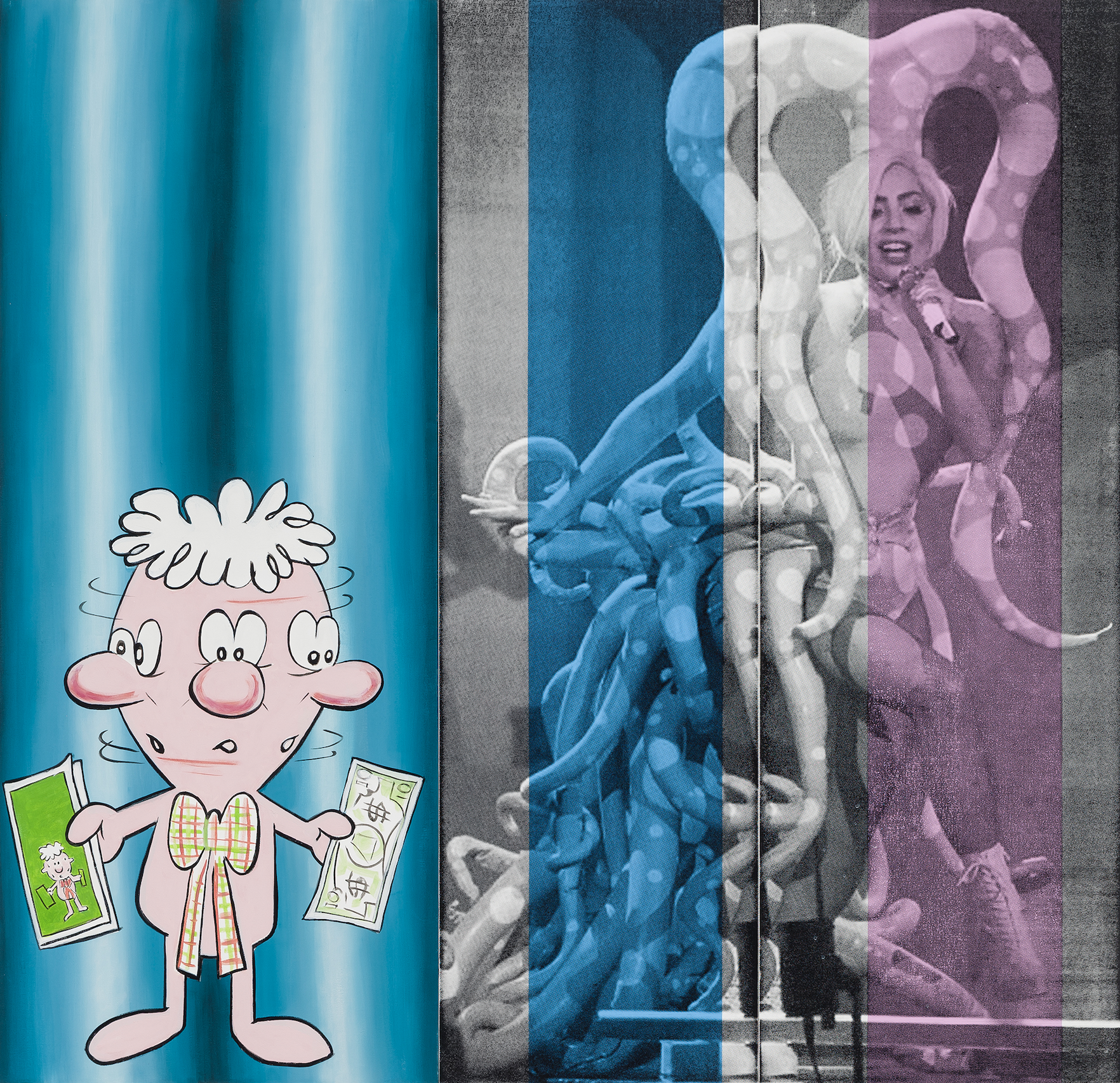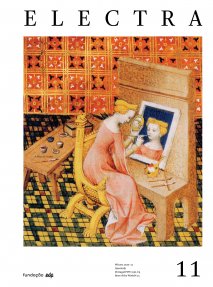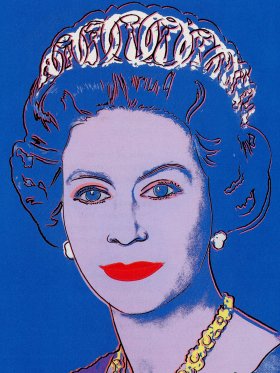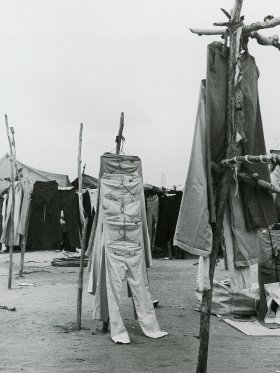This circumstance has turned fame into an ephemeral thing implanted in places, which, due to the atomisation of the media, ignore each other and have no crossover. ‘Social media’ have removed television’s long-standing privilege, multiplying the number of screens. While television still plays an important role, fame can be achieved on other media today, but all depend upon ultra-visibility and hyper-exposure. We therefore see the full realisation of the idea Deleuze adopted from Serge Daney and which (in Pourparlers) he formulates in more categorical terms: the idea of the ‘stadium’ or ‘state’ of the image which under the name of television turns the whole world into a cinema. The world is covered in screens and becomes a cinema – any cinema. When, in his 1986 ‘Letter to Serge Daney: Optimism, Pessimism and Travel’, Deleuze says the world started making cinema, any cinema, and it is this which constitutes television, it reminds us – with some evidence – of the idea of the society of the spectacle, even though Debord regards image as a mediation of the spectacle and not the spectacle per se.
The question of fame today cannot be understood without referring to images, to a current world saturated with images. The consequences are initially aesthetic: there is a generalised aestheticisation of society (or, as Lukács called it, an ‘aesthetic culture’, responsible in fact for a de-artification). However, it is within this order of hyperbolic visibility that the phenomena of fame take place today. The task of the famous is to manage a system of visibility that tends towards the totalitarian. The circulation of images is so important within this system that ‘famous’ becomes confused with ‘iconic’. This is why the word ‘icon’ is used to describe the most famous people of all, those who occupy a paramount place in the supermarket of fame and become representative figures of the age, of its surface phenomena (since, in this case, an icon has a completely profane dimension). The French philosopher and musicologist Peter Szendy, whose name reveals his Hungarian roots, created the neologism ‘iconomics’, in which we recognise not just the word ‘icon’, from one of the Greek names for ‘image’, but also the word ‘economy’. It analyses how our perception of images is moulded by the contemporary economic system. ‘Iconomics’ is inscribed in what Szendy describes as an ‘aesthetic supermarket’. Transposed to the engendering of fame, the question of iconomics helps us realise that this phenomenon must be seen simultaneously from the standpoint of both aesthetics, insofar as it is given form by images, and economics, since fame is like a commodity. At a time like today, when commodities control every aspect of social life, it is the most precious commodity of all.
In no other age has this commodity called fame been produced so intensively. Which is the same as to say that never before have there been so many famous people. Fame today is certainly shared between many more people because it comes and goes far more quickly, and the time each person has to enjoy it is growing ever shorter. It moves from one person to the next like a frivolous and unfaithful lover. However, there have also never been so many means to achieve fame and to ensure the wide audience without which it could not exist. Digital technologies, the virtual world of social media, the proliferation of mass communications – the range of vehicles available to us to win over a highly competitive public realm that is set up to encourage a fight for fame (could there be anything more hideous?) is wider than ever. In this immaterial world, fame does not need to be the corollary of substance; it does not need a solid basis on which to stand. The age has ended where the famous were exclusively those who stood out for their heroism, for their exemplary actions, for achievements that became our shared heritage, or for the roles played in socialising culture and spreading knowledge and opinion. They were only entitled to enter the public sphere when authorised to do so. In the field of art, fame was even regarded as negative capital, in accordance with Flaubert’s ethical precept: ‘Honour dishonours.’ Iconomics worked in reverse: the further from public honours and, therefore, the realm in which fame is constructed, the greater the prestige. This is how it had worked from Romanticism until the triumph of the cultural industry. In the artistic and literary field, prestige was one thing and fame another. They were mutually contradictory. In the late-Modernist and advanced capitalist eras, there was a tendency for prestige and fame to converge, even in the arts and literature. Guy Debord described the law of this convergence in his work on the society of the spectacle: ‘That which appears is good, that which is good appears.’
Images, simulacra and fetishes – these are the key concepts that govern the phantasmagorias of the market in fame. They relate to the idea of the world’s de-realisation and to complete visibility: everything must be seen, everything must be visible, and the image into which all of reality is converted is the place of this visibility par excellence. The word ‘phantasmagoria’ is appealing, but it implies an idea of the transfiguration of reality that accepts and even requires that we draw a line between truth and falsehood, reality and alienation. However, the rule of fame we see today, this hollow fame afforded through media popularity (that attributes fame to writers, artists, journalists, entertainers, YouTubers and influencers with no distinction between them), goes beyond truth and falsehood; these categories are not allowed. What is true or false about someone who becomes known for their frequent television appearances? How do you decide if one kind of fame is legitimate but not another if legitimacy is all about the medium that makes someone famous and not the individual who is famous? What exists is a constant detachment from the investments that decide the right to fame. Film stars were famous, and physically they conformed to an aesthetic, a rhetoric and a language that had a name: glamour. Today, glamour is no longer fascinating and is in fact no longer cultivated. Glamour came with sex appeal, which moved on to new pastures. Today, we see top models achieve more fame than film actors and then vanish; we see chefs achieve fame that is now also on the verge of vanishing; and we see bloggers achieve an ephemeral fame that is recycled into less famous activities. Even pop stars are almost a remnant of the past.
But let us return to this idea coined by the neologism ‘iconomics’ to clarify the relationship between fame and commodity. In truth, the logic governing the forms of spectacular appropriation that confer the quality of fame on someone is the same as that which dictates the fetishism of a commodity. In Volume I, Part 4 of Capital, Marx explains how a commodity acquires this fetishism and what its secret is. With an exchange value that abolishes its use value, a commodity becomes the object of investment fetishism, which gives it an abstract quality and fills it ‘full of metaphysical subtleties and theological astuteness’. A commodity’s secret is its appeal as a fetish – the phantasmagorical aspect it acquires as an object of enchantment and desire.
Fame does not exist without the power and rapture of fetishism in action. It needs the existence of tacit and unconscious rules that aesthetic capitalism, in its spectacular forms, promotes and cultivates. The mechanisms by which fame is constructed largely feed on the desire for fame of anonymous people who no longer want to be anonymous – people who aspire, in their narcissism, to climb onto the stage to become the protagonists of the world’s greatest spectacle.
*Translated by Chris Foster







Share article